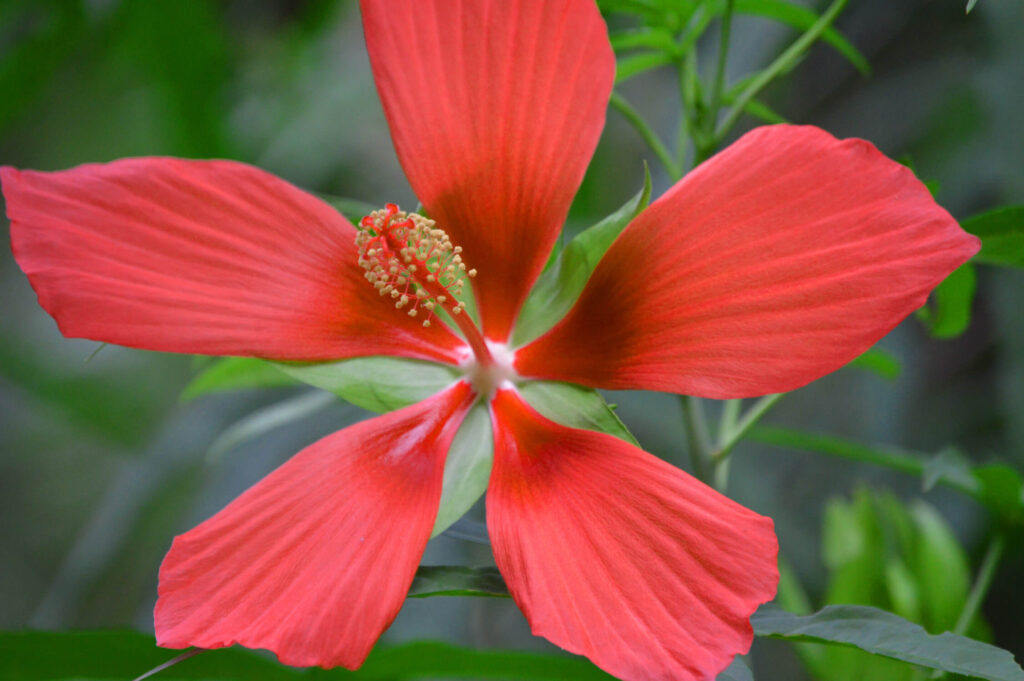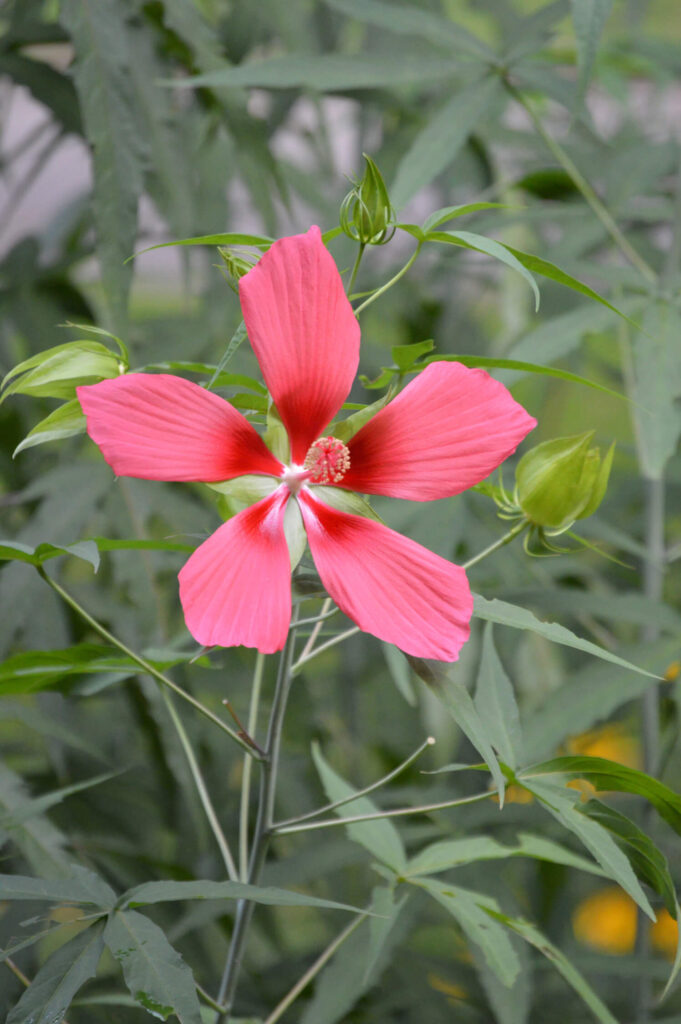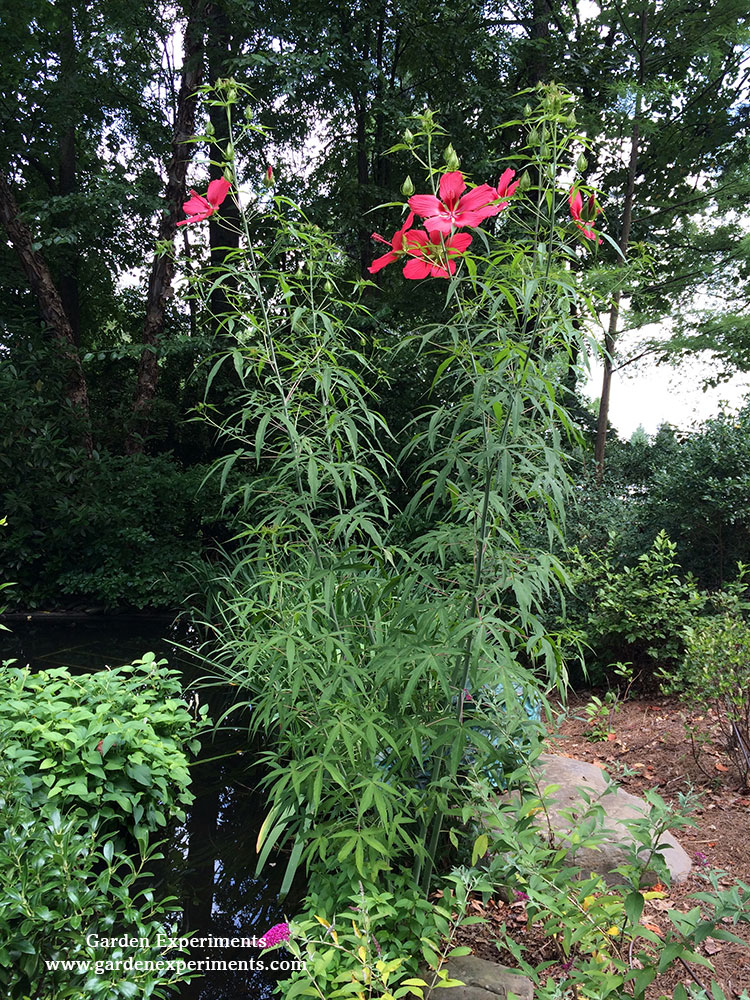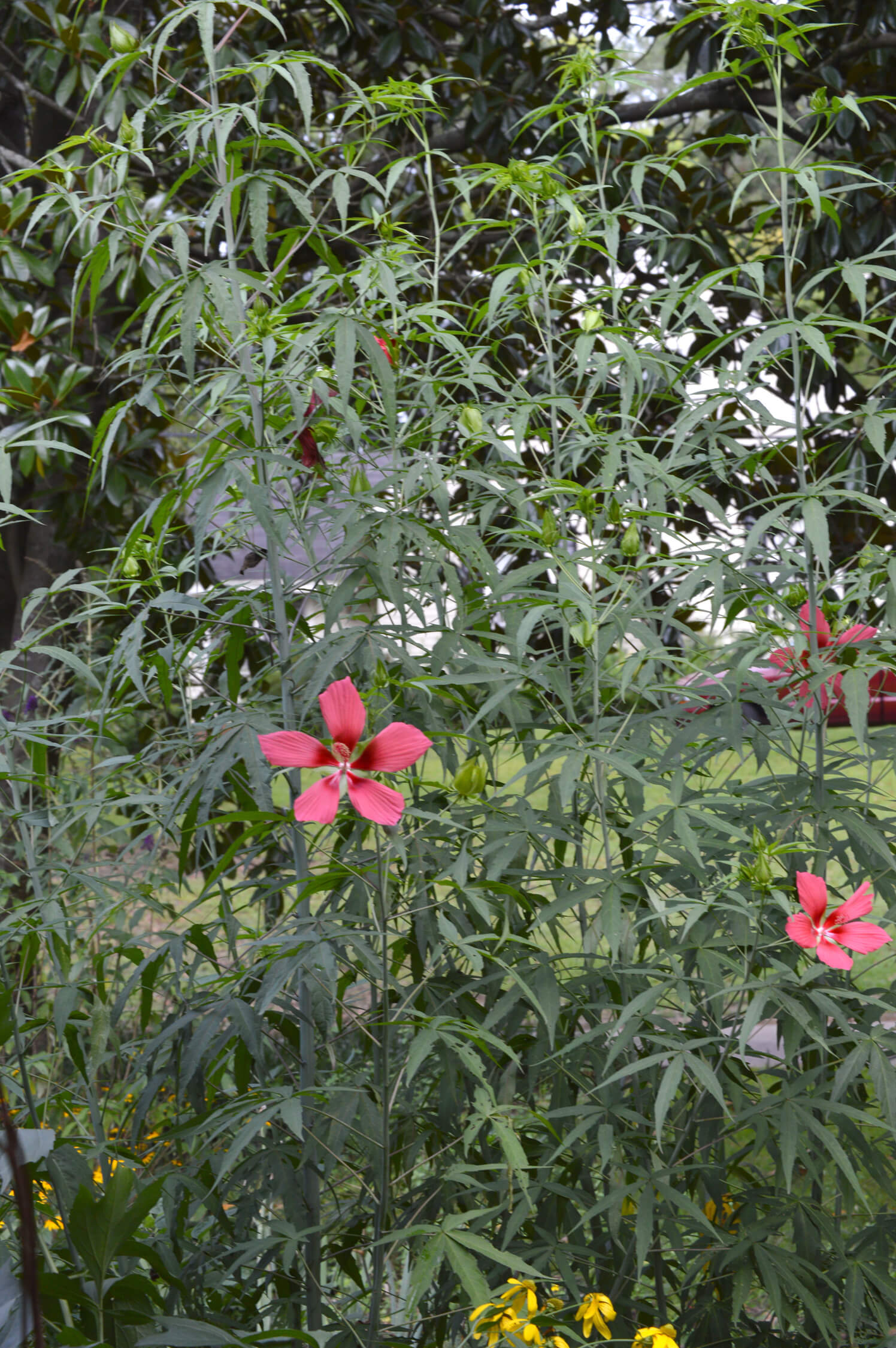Have you got swampy soil? Then this is the perfect flowering plant solution for your garden. Native to the marshes and swamps of the southeastern states – from Louisiana to North Carolina –swamp mallows (Hibiscus coccineus) prefer wet soil and even standing water.

Swamp Mallow is Perfect for Wet Soil
I had one spot in my front flowerbeds that none of my favorite plants would grow in – the roots of the plants were rotting. The soil was pure clay, brought to the surface during a construction project. As a result, this area stayed wet for a long time after a day of rain.
I was desperate to figure out what to plant in that spot – did I need to dig out the soil? Amend it? What should I do? Finally, a landscaper friend who knew I was fond of native plants recommended swamp mallow.
I love it – it grows very tall (up to 8 feet) and about 3 feet wide, producing multiple stems from one clump, and has lots of bright red flowers throughout the summer. The only mistake I made was surrounding it by shorter plants. Because it is so tall (mine has grown 6-8 feet) it really sticks out. I plan to add some taller plants around it to make it blend in better.
Plant Description
This beauty is also known as scarlet rose mallow or swamp hibiscus. I’ve heard it called marsh mallow before, but maybe that was meant as a pun.

It is an herbaceous perennial commonly found in swamps, ditches, marshes, and along stream edges. It’s native to the southeastern U.S., blooms from June to September, and grows well in zones 5 to 9. Once established, it is relatively drought tolerant.
It tolerates summer heat, and even though it grows very tall (up to 8 feet), I have never had to stake my plants. Even in high winds, when other plants bend, the semi-woody stems of this plant stay erect.
Flowers
The flowers have the typical appearance of a hibiscus – large, bright flowers with a tall stamen. Marsh mallow flowers bloom for only one day each, but the plant produces a large number of blooms throughout the season. This hibiscus only has 5 petals and they are a little thinner than cultivated hibiscus petals, but you can’t beat the color. Also, there’s no need to deadhead the flowers to encourage blooming (as if you could reach them anyway!)
When planted together in groups of 3 or more, swamp mallows make a striking visual with their height and bright red flowers. Stems can be green to maroon-colored.
How to Grow Swamp Mallow
This one is pretty easy to grow – make sure the soil is moist or wet, and plant it in full sun for best results, but it can tolerate part-sun – then stand back and watch it grow. It’s a fast grower, so pretty soon you’ll have blooms standing as tall as 8 feet.
The stems can get pretty thick (up to an inch or almost two) – so you’ll need a lopper to cut them down in early spring. They’re semi-woody, so I don’t put them in my compost pile.


Propagating Swamp Mallow
You can grow these plants from seed or divide the roots. If you collect the seed, you’ll need to scarify them before planting.
Wildlife Value
Hibiscus coccineus attracts bees, butterflies, hummingbirds, and other pollinating insects.
Pests
Just like other hibiscus I have planted, grasshoppers like to eat the leaves. With the abundance of Eastern lubbers that I have in my yard, the cultivated hibiscus get eaten long before these native ones. But still, it’s something to keep in mind.
